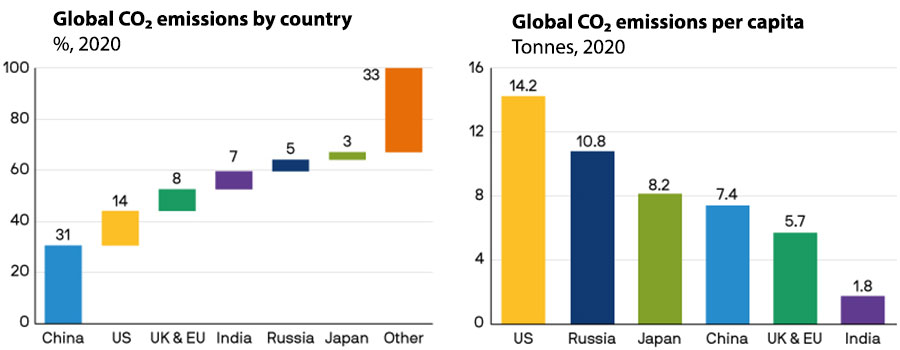28 Apr 2022
"War in Europe has turbocharged the net zero agenda. As an investor you need to be prepared for the risks and opportunities on the path to a carbon-neutral world."
The focus on achieving net zero emissions by 2050 has intensified over the past year. European governments, in particular, are even more determined to accelerate the rollout of renewable energy in the wake of the conflict in Ukraine, which has led to soaring commodity prices and an increased urgency to end dependency on Russian fossil fuels.
Yet reaching net zero over the coming decades remains fiendishly difficult. To succeed will require huge changes to the global economy, in terms of energy generation, consumption, housing and even human diets—all of which carry significant risks, as well as opportunities, for investors.
To help ensure investors are well prepared, we look at the scale of the challenge, the best strategies to achieve net zero, the options for policymakers and the key investment considerations for the transition ahead.
The task of cutting greenhouse gas emissions to the degree that is needed to reach net zero by 2050 should not be underestimated. Even before targets for emissions reductions can be set, policymakers and investors first need to be able to precisely map, quantify and analyse global greenhouse gas emissions, which itself is fraught with uncertainties.
The problem is that not all emissions are created equal, with different greenhouse gases having different lifetimes and varying abilities to absorb infrared radiation (heat). Carbon dioxide (CO₂), for example, has the lowest global warming potential of the major greenhouse gases – but has one of the longest lifetimes in our atmosphere – which helps to explain why the immediate focus of policymakers is on bold CO₂ reduction targets. However, reducing emissions of shorter-lived, but more damaging greenhouse gases, such as methane and nitrous oxide, will also need to be addressed if emission reduction plans are to remain credible.
Governments face significant challenges putting their emission reduction goals into action. One issue is that the effort required to reach net zero falls disproportionately on the emerging markets, which tend to be among the biggest polluters (greenhouse gas emissions from China and India have grown by over 300% in the last three decades alone) but also face some of the biggest challenges reaching net zero. The level of employment created by fossil fuel industries in many developing economies is one example.
Leaders in the emerging world continue to stress that emissions reduction targets must be balanced against economic goals, and that emissions per capita, stages of economic development and the effect of “offshoring” manufacturing need to be accounted for when setting climate goals. Agreements and trade-offs will therefore need to be made between the developed and emerging world to ensure emissions targets remain on track.

Source: (All charts) Gapminder, Global Carbon Project, Our World in Data, United Nations, J.P. Morgan Asset Management. Emission impact from land use change (such as deforestation) is not included. Data as of 31 March 2022.
“At the country level, absolute greenhouse gas (GHG) emissions don’t tell the whole story about the relative environmental impact of each country. At a minimum, we need to account for differences in population size by looking at emissions per capita, and we should acknowledge that countries are at different stages of economic development by assessing emissions per unit of GDP. We may also consider that, historically, emerging markets have contributed less to global GHG emissions because their economic output has been lower. In addition, some emerging market countries have higher CO₂ emissions because the production of CO₂-intensive goods has been offshored.
For companies, beyond looking at total carbon emissions, one can take into account their relative size by assessing efficiency relative to revenues or physical units of production. Those emissions can also be broken down into various categories, or scopes (as defined by the Greenhouse Gas Protocol), reflecting at which point in the value chain of a company emissions are generated. Although most efforts are currently focused on Scope 1 (direct emissions from controlled assets) and Scope 2 (indirect emissions from purchased electricity or heating/cooling) emissions, there is a growing interest in Scope 3 emissions, where indirect emissions from the rest of a company’s value chain are also considered.
Combining all those insights to determine the emissions characteristics of investments is an area of active research, with rapidly developing standards. In this context, our team recently published a document reviewing the current state of greenhouse gas accounting and clarifying how the range of carbon metrics can be applied to the investment process.”
Keven Roy, Ph.D., Climate Change Research Analyst, J.P. Morgan Asset Management Sustainable Investing team